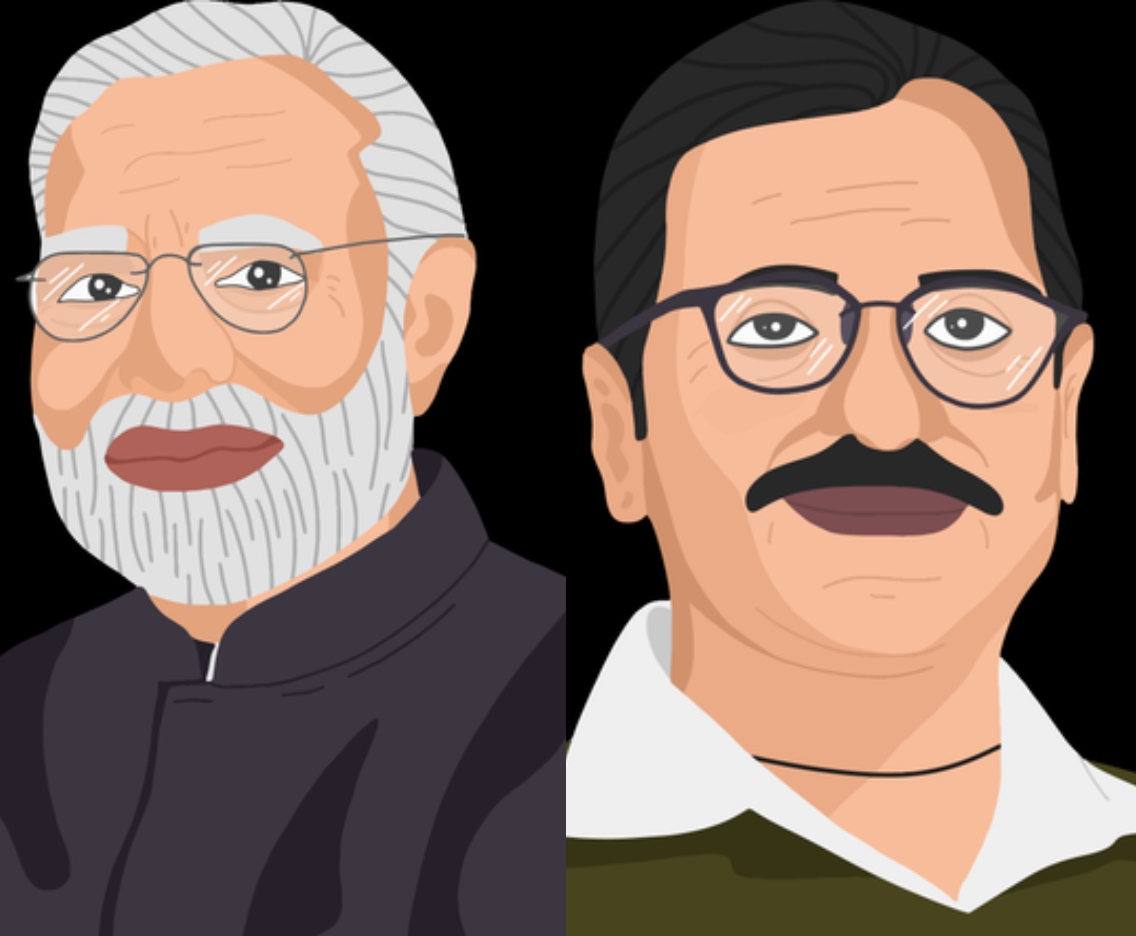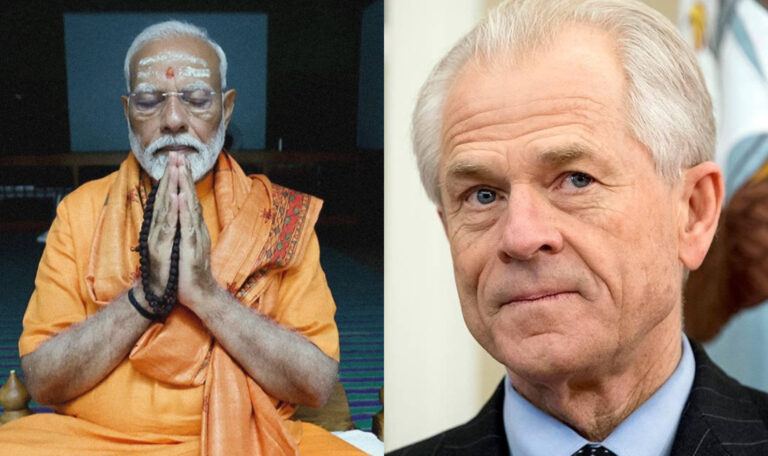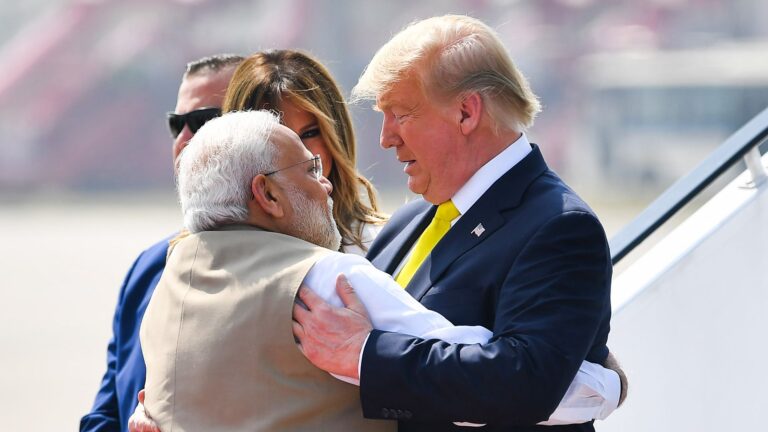
BJP defeated AAP to win Delhi Assembly elections. They will be forming the government in the national capital after 27 years. Let’s explore why AAP lost Delhi and why BJP won?
10 years of incumbency

After ruling Delhi for ten years, the Aam Aadmi Party (AAP) faced strong anti-incumbency. While it made notable progress in health and education and kept voters satisfied with power and water subsidies, unfulfilled promises like better air quality became key election issues.
AAP’s repeated claim that the BJP-led central government was creating obstacles in its governance started to sound like excuses to many voters. Meanwhile, the BJP’s “double engine” pitch, promising smooth coordination between the Centre and state, gained traction. Adding to AAP’s troubles, internal disorder and the jailing of senior leaders further weakened its position.
Absence of alliance with Congress
The lack of an alliance with Congress and its aggressive campaign likely contributed to AAP’s defeat. In past elections, AAP had largely displaced Congress in Delhi, creating an “existential crisis” among its workers. Efforts to bring them on board reportedly failed, prompting Congress to target AAP, citing growing public anger. Rahul and Priyanka Gandhi intensified attacks in the final days of campaigning, while Congress accused AAP of rejecting an alliance, pointing to Kejriwal’s early announcement of all 70 candidates. AAP’s rise in Delhi has mirrored Congress’s decline—winning 28 seats in 2013 as Congress fell from 43 to 8, and gaining further ground in 2015 as Congress’s vote share dropped by 15%.
Exodus of AAP leaders
The steady exit of senior leaders weakened AAP’s organisation and public image. Key figures like Prashant Bhushan, Yogendra Yadav, Mayank Gandhi, and Kumar Vishwas left after accusing Arvind Kejriwal of being autocratic. Kailash Gahlot also resigned, saying the party focused more on politics than fulfilling promises. His resignation, seen as a sign of internal discord, was called a courageous move by the BJP.
Liquor Scam and Sheesh Mahal
Arvind Kejriwal’s anti-corruption image took a major hit due to the liquor policy controversy and the “Sheesh Mahal” scandal. The BJP accused AAP of receiving kickbacks and turning Delhi into a “city of drunkards,” leading to arrests of top leaders, including Kejriwal. The costly renovation of Kejriwal’s residence further fueled criticism. His arrest in March 2024 and resignation as CM weakened AAP’s credibility. Though later granted bail, the leadership shift to Atishi further hurt the party’s unity and public trust.
AAP’s Negative Campaigning
AAP’s negative campaigning focused on issues like Yamuna pollution, the Delhi Police, and the Election Commission (EC), which may have impacted public perception. Ahead of the polls, Kejriwal accused the BJP-led Haryana government of deliberately polluting the Yamuna to create an artificial water crisis in Delhi. AAP also alleged voter fraud and irregularities, accusing the EC and Delhi Police of shielding BJP workers.
Kejriwal wrote to the Chief Election Commissioner, claiming AAP volunteers were being harassed, but the EC stated no written complaints were found in most cases. AAP further criticized the EC for not making Form 17C public, alleging a lack of transparency. In response, the EC clarified that copies had already been provided to polling agents as per election rules.
AAP launched transparentelections.in website to present Form 17C data for all constituencies. The BJP dismissed AAP’s claims as an attempt to shift blame. The allegations and counterclaims kept AAP in a defensive mode. The party’s aggressive stance against the EC and BJP may have alienated some voters.
Corruption charges against Kejriwal, AAP ministers
The AAP rose to power with a promise to eliminate corruption in Delhi. However, its reputation took a hit amid the liquor policy controversy and multiple corruption allegations against its top leaders. Arvind Kejriwal, Manish Sisodia, and Sanjay Singh have been at the center of these charges. After securing bail, Kejriwal resigned as Chief Minister, handing over the position to Atishi. He sought public validation as ‘Mr. Clean,’ but Delhi voters chose not to give him another chance.
Unclean Yamuna and Rising Air Pollution

In 2020, tackling Delhi’s air pollution was among Kejriwal’s 10 “guarantees.” However, this year, his manifesto made no mention of pollution. Over the past decade, the AAP government has consistently blamed neighboring states while evading accountability for Delhi’s worsening air quality. Meanwhile, the BJP has pledged to cut PM2.5 and PM10 levels by half over the next five years. Taking a direct swipe at Kejriwal, the party also promised to clean the Yamuna within the same timeframe.
Continuation of AAP schemes
Since 2013, Kejriwal’s AAP government has established the ‘Delhi Model,’ centered around welfare schemes and freebies for the underprivileged. However, the BJP turned the tables by announcing its own set of incentives and subsidies. While PM Modi and BJP leaders had previously criticized such programs as ‘revadis,’ their stance in Delhi shifted dramatically. The party assured voters that all existing AAP government schemes would continue under BJP rule, with Modi personally guaranteeing their continuation.
This directly countered AAP’s claims that a BJP government would strip the underprivileged of their benefits. In its three-part manifesto, the BJP promised Rs 2,500 per month to women from poor families under the ‘Mahila Samriddhi Yojana.’ Additionally, it pledged LPG cylinders at Rs 500 for economically weaker women and one free cylinder each on Holi and Diwali. By adopting a pro-welfare stance, the BJP strategically neutralized AAP’s stronghold on freebies, making the battle for Delhi’s governance even more competitive.
BJP Tailors Campaign Group-Wise
Apart from highlighting Modi, the BJP designed its campaign to cater to Delhi’s diverse linguistic, regional, and social groups. While major rallies were led by top leaders, local BJP leaders focused on smaller, more targeted gatherings, including informal meetings in people’s homes. For instance, a team led by national general secretary Tarun Chugh and former Union minister Rajeev Chandrasekhar held nearly 5,000 such small meetings in the seven weeks leading up to the elections.
The Never-Ending LG-AAP Feud
AAP blamed the poor roads and lack of civic work on delays caused by the Lieutenant Governor (LG), highlighting ongoing tensions between the Delhi government and the LG, who holds significant power in the capital. Voters seemed to prefer BJP, expecting smoother governance with a Centre-appointed LG. This aligns with BJP’s “double engine” promise, where both governments work together for Delhi’s development.
Also Read: 10 Things for Common Man in Union Budget 2025





